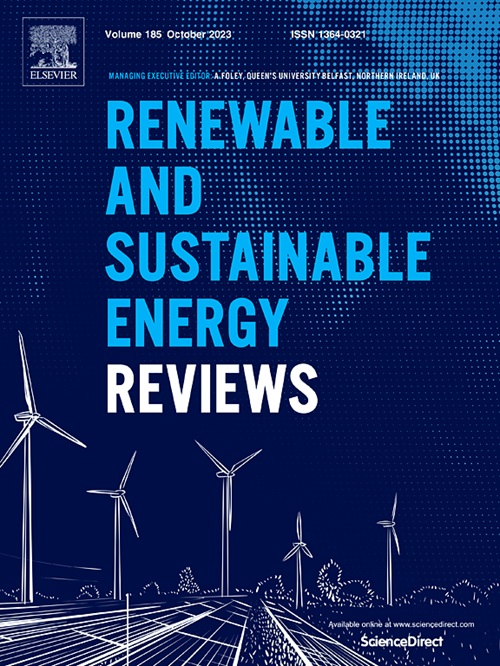直接氨燃料电池:综述
IF 16.3
1区 工程技术
Q1 ENERGY & FUELS
引用次数: 0
摘要
为了应对不断上升的温室气体排放,世界各国都在积极努力,争取到2050年实现净零碳排放,这推动了对绿色能源的广泛研究。在各种选择中,氨因其储存和运输的安全性以及高能量密度而显示出巨大的潜力。本文综述了电催化剂在直接氨燃料电池中的作用,重点介绍了电催化剂通过减少能量损失、提高电解质膜的离子电导率和增加稳定性来提高效率。目的是为该领域的未来研究人员提供一个路线图。为了进行这项研究,对直接氨燃料电池进行了文献计量学分析。这涉及通过人工智能驱动的方法检索1792篇文章,其中84篇是直接相关的。NVivo的工具——如词云和矩阵——被用来识别关键术语,如“氨燃料电池”、“膜型”和“贵金属电催化剂”。结果表明,双金属催化剂是最有效的电催化剂,而阴离子交换膜是最佳的膜类型。本文综述了直接氨燃料电池的研究现状。,重点研究电催化剂和电解质膜,指导未来研究发展高效、可持续的低温燃料电池。本文章由计算机程序翻译,如有差异,请以英文原文为准。

Direct ammonia fuel cells: A review
In response to the rising greenhouse gas emissions, countries worldwide are actively working towards achieving net-zero carbon emissions by 2050, which is driving extensive research into green energy. Among the various options, ammonia shows significant potential due to its safety in storage and transportation, as well as its high energy density. This article reviews the role of electrocatalysts in direct ammonia fuel cells, focusing on enhancing efficiency by reducing energy losses, improving the ionic conductivity of the electrolyte membrane, and increasing stability. The aim is to provide a roadmap for future researchers in this field. To conduct this study, a bibliometric analysis was performed to examine direct ammonia fuel cells. This involved retrieving 1792 articles through artificial intelligence-driven methods, of which 84 were directly relevant. NVivo tools—such as word clouds and matrices—were utilized to identify key terms like "ammonia fuel cell," "membrane type," and "noble metal electrocatalyst." The findings indicate that bimetallic catalysts are the most effective for electrocatalysts, while anion exchange membranes are identified as the optimal membrane type. This review highlights current research on direct ammonia fuel cells. , with an emphasis on electrocatalysts and electrolyte membranes, guiding future studies toward the development of efficient and sustainable low-temperature fuel cells.
求助全文
通过发布文献求助,成功后即可免费获取论文全文。
去求助
来源期刊

Renewable and Sustainable Energy Reviews
工程技术-能源与燃料
CiteScore
31.20
自引率
5.70%
发文量
1055
审稿时长
62 days
期刊介绍:
The mission of Renewable and Sustainable Energy Reviews is to disseminate the most compelling and pertinent critical insights in renewable and sustainable energy, fostering collaboration among the research community, private sector, and policy and decision makers. The journal aims to exchange challenges, solutions, innovative concepts, and technologies, contributing to sustainable development, the transition to a low-carbon future, and the attainment of emissions targets outlined by the United Nations Framework Convention on Climate Change.
Renewable and Sustainable Energy Reviews publishes a diverse range of content, including review papers, original research, case studies, and analyses of new technologies, all featuring a substantial review component such as critique, comparison, or analysis. Introducing a distinctive paper type, Expert Insights, the journal presents commissioned mini-reviews authored by field leaders, addressing topics of significant interest. Case studies undergo consideration only if they showcase the work's applicability to other regions or contribute valuable insights to the broader field of renewable and sustainable energy. Notably, a bibliographic or literature review lacking critical analysis is deemed unsuitable for publication.
 求助内容:
求助内容: 应助结果提醒方式:
应助结果提醒方式:


